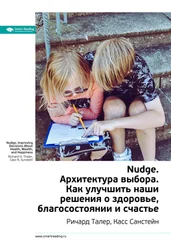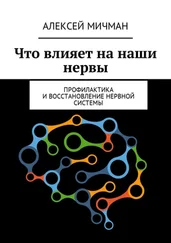58. M. H. Erdelyi. A new look at the new look: Perceptual defense and vigilance. Psychological Review, 81(1):1–25, 1974.
59. X. Fang, S. Singh, and R. Ahluwalia. An examination of different explanations for the mere exposure effect. Journal of Consumer Research, 34(1):97–103, 2007.
60. R. H. Fazio, J. R. Jackson, B. C. Dunton, and C. J. Williams. Variability in automatic activation as an unobtrusive measure of racial attitudes: A bona fide pipeline? Journal of Personality and Social Psychology, 69(6):1013–1027, 1995.
61. R. Ferraro, J. R. Bettman, and T. L. Chartrand. The power of strangers: The effect of incidental consumer brand encounters on brand choice. Journal of Consumer Research, 35(5):729–741, 2009.
62. L. Festinger. A Theory of Cognitive Dissonance, 2. Stanford University Press, 1962.
63. L. Festinger and J. M. Carlsmith. Cognitive consequences of forced compliance. The Journal of Abnormal and Social Psychology, 58(2):203–210, 1959.
64. L. Festinger, H. W. Riecken, and S. Schachter. When Prophecy Fails. University of Minnesota Press, 1956.
65. A. Floyer-Lea and P. M. Matthews. Changing brain networks for visuomotor control with increased movement automaticity. Journal of Neurophysiology, 92(4):2405–2412, 2004.
66. P. Fourneret and M. Jeannerod. Limited conscious monitoring of motor performance in normal subjects. Neuropsychologia, 36(11):1133–1140, 1998.
67. J. L. Freedman and S. C. Fraser. Compliance without pressure: The foot-in-the-door technique. Journal of Personality and Social Psychology, 4(2):195, 1966.
68. U. Frith and F. Happé. Theory of mind and self-consciousness: What is it like to be autistic? Mind and Language, 14(1):82–89, 1999.
69. M. T. Gailliot and R. F. Baumeister. The physiology of willpower. Personality and Social Psychology Review, 11(4):303–327, 2007.
70. M. T. Gailliot and R. F. Baumeister. Self-regulation and sexual restraint: Dispositionally and temporarily poor self-regulatory abilities contribute to failures at restraining sexual behavior. Personality and Social Psychology Bulletin, 33(2):173–186, 2007.
71. M. T. Gailliot, R. F. Baumeister, C. N. Dewall, J. K. Maner, E. A. Plant, D. M. Tice, L. E. Brewer, and B. J. Schmeichel. Self-control relies on glucose as a limited energy source: Willpower is more than a metaphor. Journal of Personality and Social Psychology, 92:325–336, 2007.
72. M. T. Gailliot, B. M. Peruche, E. A. Plant, and R. F. Baumeister. Stereotypes and prejudice in the blood: Sucrose drinks reduce prejudice and stereotyping. Journal of Experimental Social Psychology, 45(1):288–290, 2009.
73. M. S. Gazzaniga. Cerebral specialization and interhemispheric communication: Does the corpus callosum enable the human condition? Brain, 123(7):1293–1326, 2000.
74. N. J. Goldstein, R. B. Cialdini, and V. Griskevicius. A room with a viewpoint: Using social norms to motivate environmental conservation in hotels. Journal of Consumer Research, 35(3):472–482, 2008.
75. J. D. Greene, L. E. Nystrom, A. D. Engell, J. M. Darley, and J. D. Cohen. The neural bases of cognitive conflict and control in moral judgment. Neuron, 44(2):389–400, 2004.
76. J. D. Greene, R. B. Sommerville, L. E. Nystrom, J. M. Darley, and J. D. Cohen. An fMRI investigation of emotional engagement in moral judgment. Science, 293:2105–2108, 2001.
77. A. G. Greenwald, D. E. McGhee, and J. L. K. Schwartz. Measuring individual differences in implicit cognition: The implicit association test. Journal of Personality and Social Psychology, 74(6):1464–1480, 1998.
78. D. M. Gromet and E. Pronin. What were you worried about? Actors’ concerns about revealing fears and insecurities relative to observers’ reactions. Self and Identity, 8(4):342–364, 2009.
79. N. Guéguen. Mimicry and seduction: An evaluation in a courtship context. Social Influence, 4:249–255, 2009.
80. C. L. Hafer and L. Bégue. Experimental research on just-world theory: Problems, developments, and future challenges. Psychological Bulletin, 131:128–167, 2005.
81. A. M. Haffenden, K. C. Schiff, and M. A. Goodale. The dissociation between perception and action in the Ebbinghaus illusion: Nonillusory effects of pictorial cues on grasp. Current Biology, 11(3):177–181, 2001.
82. J. Haidt and S. Kesebir. Morality. In S. T. Fiske, D. T. Gilbert, and G. Lindzey, editors, Handbook of Social Psychology, pages 797–832, 2010.
83. W. T. Harbaugh, U. Mayr, and D. R. Burghart. Neural responses to taxation and voluntary giving reveal motives for charitable donations. Science, 316:1622–1625, 2007.
84. R. D. Hare, S. D. Hart, and T. J. Harpur. Psychopathy and the DSM – IV criteria for antisocial personality disorder. Journal of Abnormal Psychology, 100(3):391–398, 1991.
85. A. A. Harrison. Mere exposure. Advances in Experimental Social Psychology, 10:39–83, 1977.
86. L. C. Hawkley and J. T. Cacioppo. Loneliness and pathways to disease. Brain, Behavior, and Immunity, 17: S98–S105, 2002.
87. M. Höfle, M. Hauck, A. K. Engel, and D. Senkowski. Viewing a needle pricking a hand that you perceive as yours enhances unpleasantness of pain. Pain, 153(5):1074–1081, 2012.
88. D. Hume. Enquiries concerning Human Understanding and concerning the Principles of Morals. Oxford University Press, 1777.
89. N. Humphrey. The Inner Eye. Faber, 1986.
90. N. Humphrey. Soul Dust. Princeton University Press, 2011.
91. M. Inzlicht and B. J. Schmeichel. What is ego depletion? Toward a mechanistic revision of the resource model of self-control. Perspectives on Psychological Science, 7(5):450–463, 2012.
92. M. Jeannerod. Consciousness of action as an embodied consciousness. In S. Pockett, W. P. Banks, and S. Gallagher, editors, Does Consciousness Cause Behavior, pages 25–38. MIT Press, 2006.
93. V. Job, C. S. Dweck, and G. M. Walton. Ego depletion – is it all in your head? Implicit theories about willpower affect self-regulation. Psychological Science, 21(11):1686–1693, 2010.
94. P. Johansson, L. Hall, S. Sikstrom, and A. Olsson. Failure to detect mismatches between intention and outcome in a simple decision task. Science, 310:116–119, 2005.
95. R. Kaufman. Inside Scientology. The Olympia Press, 1972.
96. J. Knobe. Intentional action and side effects in ordinary language. Analysis, 63(279):190–194, 2003.
97. M. Koenigs, L. Young, R. Adolphs, D. Tranel, F. Cushman, M. Hauser, and A. Damasio. Damage to the prefrontal cortex increases utilitarian moral judgements. Nature, 446(7138):908–911, 2007.
98. T. Kogut and I. Ritov. The ‘identified victim’ effect: An identified group, or just a single individual? Journal of Behavioral Decision Making, 18(3):157–167, 2005.
99. M. Kosfeld, M. Heinrichs, P. J. Zak, U. Fischbacher, and E. Fehr. Oxytocin increases trust in humans. Nature, 435(7042):673–676, 2005.
100. A. W. Kruglanski, S. Alon, and T. Lewis. Retrospective misattribution and task enjoyment. Journal of Experimental Social Psychology, 8(6):493–501, 1972.
101. W. R. Kunst-Wilson and R. B. Zajonc. Affective discrimination of stimuli that cannot be recognized. Science, 207:557–558, 1980.
102. J. L. Lakin, V. E. Jefferis, C. M. Cheng, and T. L. Chartrand. The chameleon effect as social glue: Evidence for the evolutionary significance of nonconscious mimicry. Journal of Non-Verbal Behavior, 27(3):145–162, 2003.
103. G. Lakoff and M. Johnson. Metaphors We Live By. University of Chicago Press, 1981.
104. M. J. Lerner. Observer’s evaluation of a victim: Justice, guilt, and veridical perception. Journal of Personality and Social Psychology, 20:127–135, 1971.
105. M. J. Lerner and C. H. Simmons. Observer’s reaction to the ‘innocent victim’: Compassion or rejection? Journal of Personality and Social Psychology, 4(2):203–210, 1966.
Читать дальше
Конец ознакомительного отрывка
Купить книгу

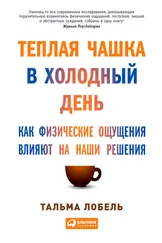

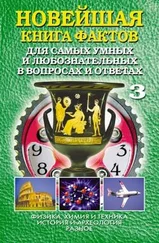
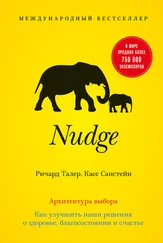
![Мэтью Джексон - Человеческие сети [Как социальное положение влияет на наши возможности, взгляды и поведение]](/books/390847/metyu-dzhekson-chelovecheskie-seti-kak-socialnoe-po-thumb.webp)

